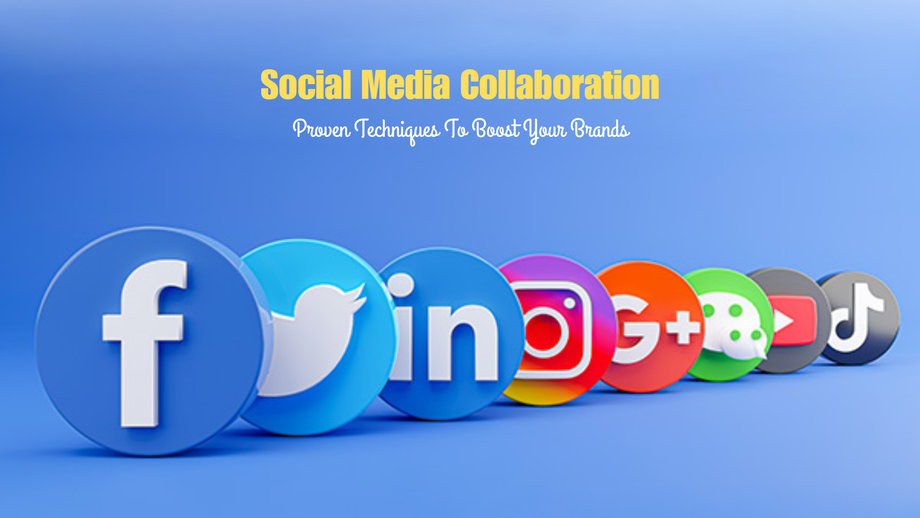In this article, the author mentions some proven social media collaboration techniques that help to boost your brands.
Social media reigns as a powerful tool for brand building and audience engagement. However, the ever-growing sea of content can make it challenging for brands to stand out. It is where social media collaboration comes in – a strategic approach that leverages the combined reach and influence of various commodities to boost your brand message.
The Power of Collaboration
Collaboration with social media unlocks a treasure trove of benefits for your brand:
-
Increased Brand Awareness: Teaming up with another brand exposes you to a new audience, increasing your reach. Imagine a local bakery collaborating with a coffee shop on Instagram. By co-hosting a giveaway or creating a recipe post featuring their products, both brands gain exposure to each other's followers.
-
Enhanced Credibility: Partnering with a reputable brand in your industry or a complementary niche can add a layer of trust and authority to your brand image. For example, a fitness clothing brand collaborating with a well-known yoga instructor on a workout video series benefits from the instructor's established reputation.
-
Content Diversification: Collaboration injects fresh perspectives and content styles into your social media strategy. It keeps your audience engaged and prevents content fatigue. Partnering with a creative agency or influencer can spark innovative content ideas that resonate with your target audience.
-
Boosted Engagement: Collaborations often generate excitement and anticipation among your audience. Interactive content formats like contests, Q&A sessions, or live streams co-hosted with another brand can significantly increase engagement levels on your social media channels.
Social Media Collaboration Examples In Action
Here are some inspiring examples of social media collaboration across different platforms:
-
Instagram Takeovers: A beauty brand could partner with a makeup artist for a live Instagram takeover session, offering tutorials, product recommendations, and answering audience questions.
-
Twitter Chats: Industry experts can host a Twitter chat using a designated hashtag, fostering discussions around relevant topics and attracting a wider audience.
-
Co-created Content: A travel blogger and a clothing brand could collaborate on a blog post showcasing travel-friendly outfit ideas, reaching their audiences simultaneously.
-
User-Generated Content (UGC) Campaigns: Encourage followers to create content based on a specific theme or using your brand's products. Partner with other brands to offer co-branded prizes for the best entries, maximizing user engagement.
Collaboration with Brands: Finding the Perfect Match
Identifying the right brands for collaboration is crucial to maximize the impact. Here are some key considerations:
-
Target Audience Alignment: Choose brands whose audience demographics and interests overlap with yours to ensure a relevant and engaged reach.
-
Brand Values Compatibility: Partner with brands that have similar values and messaging to maintain brand consistency and build trust with your audience.
-
Engagement Potential: Look at a brand's social media presence and engagement metrics. Collaborating with brands known for high engagement ensures your content reaches a receptive audience.
Tools and Techniques for Streamlining Collaboration
While collaboration with social media offers immense benefits, managing the logistics can be time-consuming. Here's how technology can simplify the procedure:
-
Social Media Management Platforms: These platforms allows you to schedule posts, track analytics, and manage multiple social media accounts from one place. Collaboration features enable seamless content creation and approval workflows when working with partner brands.
-
Communication Tools: Utilize video conferencing platforms and project management tools to facilitate smooth communication and brainstorming sessions with your collaborators.
-
Social Media Automation Tools: While automation should never replace genuine interaction, scheduling tools can help manage the workload of posting content related to your collaboration.
Conclusion
Collaboration with social media is a dynamic and effective strategy for brands looking to boost their online presence. By partnering with brands, and influencers, and leveraging automation tools, businesses can create engaging content, reach audiences, and build stronger customer relationships. The key to success lies in choosing the right partners, setting clear objectives, and utilizing social media automation to streamline efforts. By implementing these proven techniques, your brand can harness the power of collaboration to achieve greater heights in the digital landscape.

